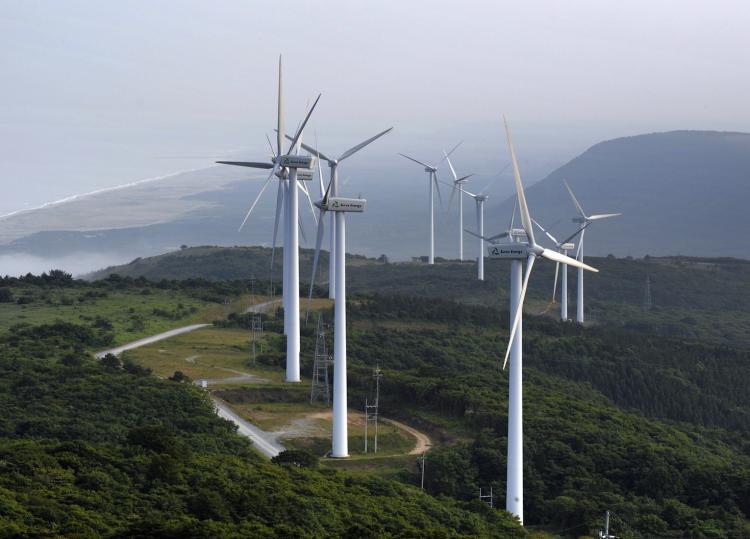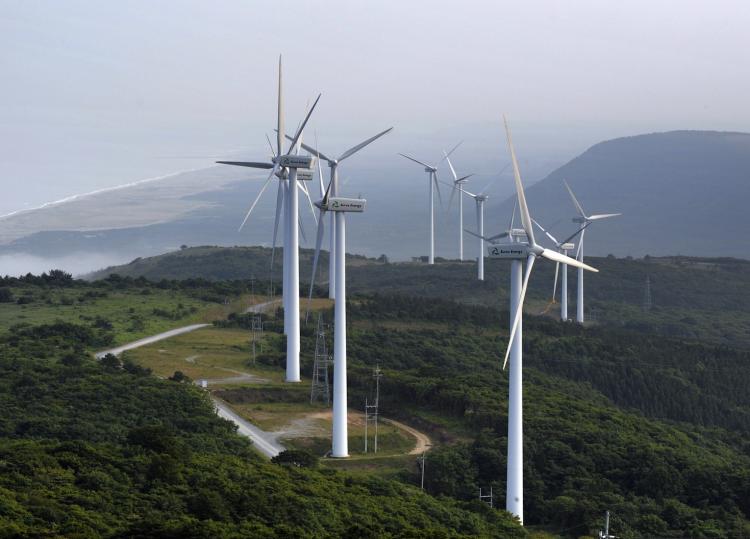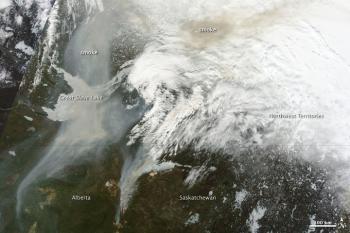Remarkably, most of Japan’s wind plants survived the devastating earthquake and tsunami, according to a statement by Japan’s Wind Power Association, cited by RenewableEnergyWorld.com.
One plant off the central eastern coast which survived the tsunami, is currently running at full capacity in order to supply electricity to Tokyo Electric Power Co. (TEPCO).
The Japan Times reported that the wind plant is 50 meters (164 feet) off the coast of the city of Kamisu, and is owned and run by Fukui Prefecture-based Mitani Corp. This specific wind plant has seven power generators; the company’s total output is 14,000 kw.
Mitani Managing Director Yoshitaka Yamamoto said, “All the windmills and transformer stations were safe. Our facilities proved resistant to tsunami,” according to the Times.
A generator for a wind system has an operating cost of around 600 million yen (US$7 million), according to Yamamoto, while a nuclear reactor costs hundreds of billions of yen.
While wind plants are far more resistant to natural disasters and far cheaper than nuclear plants, in Japan they only generate about 0.04 percent of TEPCO’s current energy output, and cannot meet the total demand for electricity, the Japan Times reported.
Yamamoto also said that since TEPCO seeks to avoid blackouts, it has asked Mitani Corp. to run the plant off Kamisu at full capacity.
The government is expected to support wind plant expansion, increasing the energy from wind output to 10 million kw, which is equal to 10 nuclear reactors, by 2020, according to the report.
Last week Japanese Prime Minister Naoto Kan said the country would seek to make alternative energy sources “a major pillar” of Japanese energy, The Mainichi Daily News reported.
“Taking this [nuclear crisis] as a lesson, we will lead the world in clean energy such as solar and biomass, as we take a step toward resurrection,” Kan said.
One plant off the central eastern coast which survived the tsunami, is currently running at full capacity in order to supply electricity to Tokyo Electric Power Co. (TEPCO).
The Japan Times reported that the wind plant is 50 meters (164 feet) off the coast of the city of Kamisu, and is owned and run by Fukui Prefecture-based Mitani Corp. This specific wind plant has seven power generators; the company’s total output is 14,000 kw.
Mitani Managing Director Yoshitaka Yamamoto said, “All the windmills and transformer stations were safe. Our facilities proved resistant to tsunami,” according to the Times.
A generator for a wind system has an operating cost of around 600 million yen (US$7 million), according to Yamamoto, while a nuclear reactor costs hundreds of billions of yen.
While wind plants are far more resistant to natural disasters and far cheaper than nuclear plants, in Japan they only generate about 0.04 percent of TEPCO’s current energy output, and cannot meet the total demand for electricity, the Japan Times reported.
Yamamoto also said that since TEPCO seeks to avoid blackouts, it has asked Mitani Corp. to run the plant off Kamisu at full capacity.
The government is expected to support wind plant expansion, increasing the energy from wind output to 10 million kw, which is equal to 10 nuclear reactors, by 2020, according to the report.
Last week Japanese Prime Minister Naoto Kan said the country would seek to make alternative energy sources “a major pillar” of Japanese energy, The Mainichi Daily News reported.
“Taking this [nuclear crisis] as a lesson, we will lead the world in clean energy such as solar and biomass, as we take a step toward resurrection,” Kan said.





